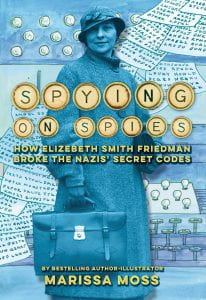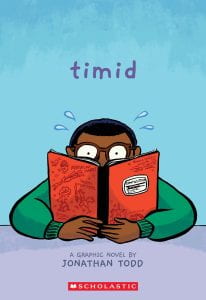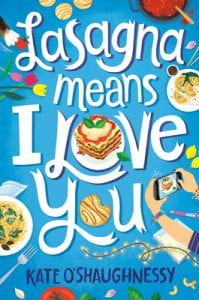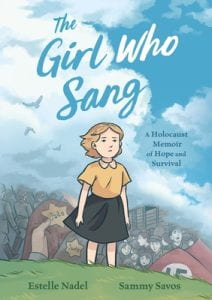 DiCamillo, Kate. Ferris. Candlewyck Press, 2024. 978-1-536-23105-2. 226 p. $18.99. Grades 4-8.
DiCamillo, Kate. Ferris. Candlewyck Press, 2024. 978-1-536-23105-2. 226 p. $18.99. Grades 4-8.
The summer before fifth grade, Emma “Ferris” Wilkey’s ailing grandmother, Charisse, is visited by a ghost with an unusual request: to light the chandelier in the family’s rambling house for the first time. Because Ferris adores her grandmother, she readily agrees to search their small town to procure the necessary 40 candles and execute the project. She enlists her best friend, Billy Jackson, a passionate pianist, particularly attached to playing, “Mysterious Barricades.” Billy is a frequent visitor to the quirky Wilkey household. Besides Charrise, the family includes the ever-practical Mrs. Wilkey; her architect, encyclopedia-reading husband; six-year-old, impulsive Pinky; and, this summer, the recently separated Uncle Ted, resides in the basement attempting to paint a history of the world. As Ferris goes about her task, she runs interference between Uncle Ted and Aunt Shirley, joins Billy in the evening pondering on the roof of his father’s steakhouse, and spends loving visits with her grandmother. Like most-if not all-of Kate DiCamillo books, the language sings and the imagery soars. The cast of characters is both eccentric and wise. The plot is humorous and yearning and sad. Both Ferris and Billy have benefited from having Mrs. Mielk – a minor character – as their language arts teacher, and the text contains multiple examples of their expanding vocabulary. At times, the repeated mention of a new vocabulary word edges on being tiresome, but in a children’s book, the opportunity to weave new words into the story is a plus. In Ferris, Kate DiCamillo is telling the reader something about life and life’s ending. For young readers, Ferris and her off-beat family is a satisfying read; for older readers, the dynamics of life and death, the complexity of growing up, and the intricacies of love and relationships are something to explore.
THOUGHTS: Kate DiCamillo produces memorable characters and even more memorable quotes. One of my favorites is, “Every good story is a love story.” She probes one’s brain by introducing obscure (?at least to me) musical compositions like, “Mysterious Barricades” and St. Bede’s parable of a sparrow at a feasting table. It is obvious Ferris and her grandmother have a strong bond, but a reason for her little sister’s wild behavior is not so clear. Ferris is not her own person, yet, and it seems her mother fears it may be an insurmountable task for her timid daughter. There’s lots of situations to unravel in Ferris. Thinking about some of it may not interest some youngsters; but this book occupies a part of my brain as I sort out its meaning.
DiCamillo introduces a new cast of quirky characters in her latest novel. Ten-year old Emma Phineas Wilkey, better known as Ferris, was born under a Ferris Wheel. She lives with her parents, a younger rambunctious sister, and her grandmother Charisse, who is the only one in the family who can see the ghost of an anxious woman. The family has their share of eccentricities. Her father likes to read encyclopedias, her sister wants to be an outlaw, and Uncle Ted is holed up in the Wilkey’s basement painting a masterpiece about the history of the world. Ferris’s best friend is Billy Jackson, who loves playing the only song he knows on the piano (“Mysterious Barricades”), especially in his widowed father’s restaurant. The Wilkey family experiences some challenging moments. Ferris worries about Charisse, who is very ill from heart failure. Uncle Ted has left his wife Shirley, a beautician, and young Pinky gets arrested for attempted bank robbery and theft. Outside the family, others continue to experience grief and loss, like the widowed Mrs. Mielk, a teacher, and the elderly Mr. Boyd who still pines for his old flame Charisse. The Wilkey family and friends have a community dinner under a candlelit chandelier, which helps many come to terms with their troubles, including the ghost. The storyline is not overly sad and has many humorous moments. Billy and Ferris enjoy using Mrs. Mielk’s eclectic vocabulary words (“Billet-doux”), Ferris gets a wacky perm from her aunt, Uncle Ted has only managed to paint a shoe, and Pinky’s antics just keep on coming. Yet strong emotions underscore the events, showing the importance of family relationships and neighborly connections. As Charisee says, “Every good story is a love story.”
THOUGHTS: Hand this one to fans of DiCamillo’s other books. Recommended for grades 4-6.
Realistic Fiction
 Gratz, Alan. Heroes. Scholastic Press, 2024. 978-1-338-73607-6. $14.30. 272 p. Grades 5-8.
Gratz, Alan. Heroes. Scholastic Press, 2024. 978-1-338-73607-6. $14.30. 272 p. Grades 5-8.








